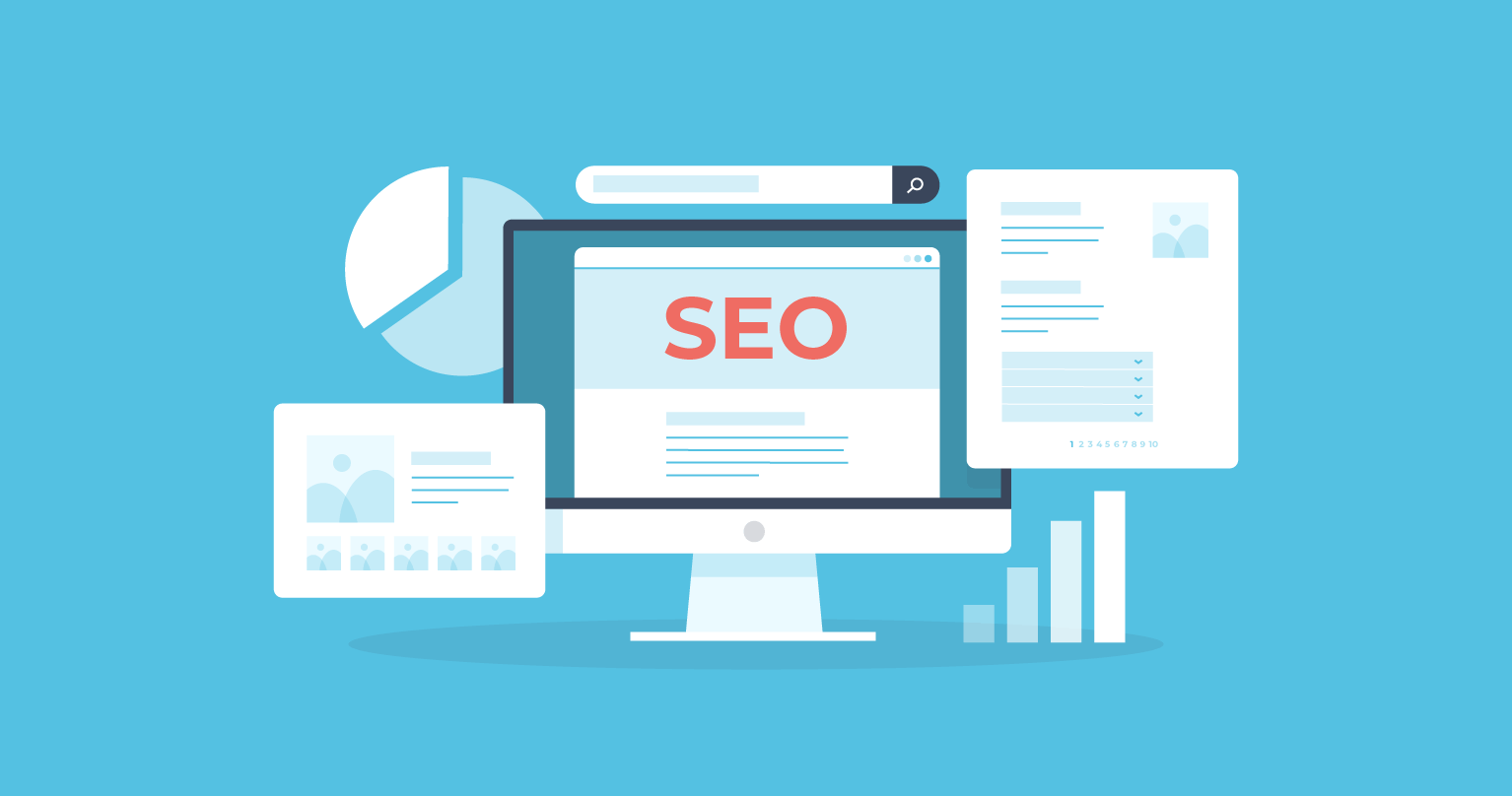You might be thinking “I'm not overlooking anything on my SEO strategy!”.
There are a few SEO factors that a lot of people overlook when optimizing their websites.
These oversights arise from ignoring a few factors. We'll be going through these factors in this article.
For comprehensive SEO work, you need to pay attention to on-page factors as well. Check out our article about it here. You can complete your SEO plan using both articles as a guide.
Now, let's dig through these widely-underrated SEO factors that can make a difference in your strategy.
Table of Contents
1. Image Optimization
There are several things you should know about how to optimize images. First of all, do you always fill out your alt-img tags? You don't even need to get Yoast or any other SEO plugin to do this.
This should be done from the beginning – all the images on your website should be optimized according to what they represent and using your target keywords.
That does not mean you should write a full-blown description for your images full of keywords. Alt-img tags are short.
It all starts with picking the right images for your website. Use infographics and charts when relevant, and choose images that are closely related to your page subject.
This makes it easier to have alt-img tags which are both informative for search engine crawlers (they can't read images without these tags) and that use the keywords that you are targeting on each page.
Another factor we're going to include in this item is your image size. By size, we don't mean to use images that occupy less space on screens when browsing. We mean download size.
Consider this size as a kind of “weight”. If your images are “heavy” in that sense, that means they'll take longer to download on any browser your prospects and customers use.
You know where we're going with this. Websites that take too long to load are a pain for both bots and users.
On the one hand, bots will check your loading speed and take your ranking down if your website takes too long to load. Google first announced that website speed was one of their ranking factors ten years ago. It still is applicable now.
Other than that, if your visitors get to your website and leave without browsing around because it takes ages to load all elements, your bounce rate will skyrocket.
Bounce rate is not supposed to affect your SEO, but if you're optimizing to get more visitors, you want them to stay on your website. You don't want users just to get to you, you need to convince them you're what they're looking for.
You can't do that with a slow website. We advise using tools like Smush (which is a paid service, although totally worth it) to compress all images on your website, making it load faster.

2. Outbound Links
It is common to use outbound links as part of our SEO strategy. We're using those in this article.
On one hand, linking towards authority websites in your field is encouraged by SEO experts as it shows you have the sources to prove your claims, which is good for users.
It is also good for crawlers because each website's reputation precedes it. If you link to spammy websites, your website will be considered spammy. If you link to authority websites that are related to your subject, you get a small reputation boost in Google's eyes.
The thing about these links is that you have no control over what other webmasters decide to do with their websites.
Outbound links can damage your SEO strategy if you're not careful. This can happen if someone deletes the page you linked to, or changes its URL.
That will make you lose that link, and at the same time make your website seem careless and lazy for pointing towards a dead-end.
What should you do to avoid this then? Check your website for broken links constantly.
You can check for broken outbound links using this WordPress plugin.
3. Static and Keyword-Based URLs
If you use dynamic URLs on your website, maybe you should consider switching to static URLs.
But first, let's start by explaining what a dynamic URL is. This kind of URL is composed of what seems to be a random code, like this:
http://www.exampledynamicsite.com/forums/thread.php?threadid=12345&sort=date
Static URLs, on the other hand, are composed of words and dashes (if you check this article's URL, it is static).
Even though Google says dynamic URLs can be crawled easily, static URLs have quite a few advantages when it comes to user experience:
- They have a higher CTR (click-through rate) than dynamic URLs
- They are more easily trusted by users
- They're easier to remember
- They allow you to use your keywords.
Even though it's not certain whether keyword-based URLs are better for SEO, it does not hurt to have your keywords in your URLs.
If you have dynamic URLs in most of your website pages, this doesn't mean you have to change them all to static URLs. In fact, to change them all is not recommended because it's difficult to be sure that the new URLs are going to work.
Nonetheless, if you're going to create new blog posts, use static URLs. That's easy on WordPress, and it should be easy on any CMS. If for no other reason, they're easier for users – and what's easy for users is good for SEO.

4. Custom 404 Pages
No matter how well you maintain your website, 404 errors happen on every website. So rather than trying to fix this, you might as well accept it.
Accepting it means that you'll have to come up with a custom 404 page for your website. This will help your users know that they're on the right website, they just need to navigate a bit more to find what they need.
If you don't use a custom 404 page, people will most likely think your website is gone for good and move on to the next website on their search results.
Eventually, since everyone leaves your website to click on the next result, you'll lose your ranking for that keyword.
This is not difficult to avoid. Just get your 404 page designed and make it easy to navigate from it to your most important pages.
5. Content Length
When optimizing your website, remember to aim for longer content. It is widely known now that longer content tends to rank better on search results.
It's not just that longer content ranks well, but you have more chances of users staying on your page if you are thorough in your subject. Pages with less than 300 words aren't good for SEO.
Of course, you might have a website that is only supposed to showcase your products. Well, first of all, we advise using one page for each product (more on that later).
Then, on each of those product pages, write detailed descriptions about each of your products, using thorough keyword research for each description. Each product should have its own keyword (or keywords, but one is enough to optimize product pages if you have a lot of products).
This leads us to our next point…
6. Unique Content
If you have a small business, or you designed a marketing strategy for a small business' website, it's likely that you have one page for all products. Well, the expression “divide and conquer” is meaningful in this context.
Each product should have its own page with enough content on it (we mentioned it in #5). This makes it easy for crawlers to find your products.
Make sure you divide your products by categories and make it easy to navigate through all your products. If it takes eternal scrolling to find a specific product, it's unlikely anyone will go through that effort.
Instead, have pages for each product category, from which you have links to each product page. Have a page in which you list all categories with links for those as well.
This will do your website another favor: great internal linking. Internal links help crawlers understand your website's structure by allowing them to navigate between pages easily.

7. Consistent Updating
Our last tip will be about the frequency in which you update your website. This is one of the reasons why almost every website should have a blog – a blog offers you a chance to be constantly updating without having to change anything in your website structure or main pages.
You probably already know that Google privileges websites that are frequently updated. What you might not know is that it's not only about posting often, it's about posting in a consistent manner.
If you go months without posting and then post three articles at once, you have an erratic update frequency. That reflects on your rankings.
Make an effort to have new posts every week, or every two weeks. It depends on the resources you have for blogging as well, of course, but keep it consistent.
Even if you only post once a month, on the same day every month, you'll have a consistent update schedule. It is better to be consistent than trying to post too often and failing.
Now, we strongly advise you to implement Google Search Console on your website. If you don't post often, spiders will crawl your website less often because you're not giving them a reason to do it every day.
It's just resource management. If you post several times a day, spiders will go through your website every day because there's new content. If you post once a month, crawling will be reduced.
We advise you to get Search Console because it has a useful tool that will help you in this case. If you can't post often to ensure freshness of content, there's a way to make sure your new URLs get crawled.
If you have only one new URL, all you have to do is paste it on the URL Inspection bar on Search Console and it will be crawled as soon as possible. This action signals for Google to crawl your new URL and index it.
If you have several new URLs to index at once, you should submit a new sitemap. All you have to do is update it on your website, then simply go to Sitemaps on Google Search Console and paste the link for your sitemap. All your new pages will be indexed in a few hours or days.
Last Considerations
SEO is not easy. It is a long term job that never ends. However, we know it's easy to get caught up in things like keyword research, optimizing title tags and meta description tags, getting backlinks…
We are aware we're adding to your workload by telling you there's more to pay attention to. However, by making you spend more time on these tasks, we'll be saving you worries and hassles further down the line.
Better SEO practices lead to profit in the long run. A few of the practices we talk about here have to do with user experience. Well, the thing is, SEO is nothing if you don't consider user experience.
If you're not sure, SERPed can help you figure out what's wrong through our SEO Analysis tool. With over 40 tools in SERPed's suite, you'll find all you need to jumpstart your content and technical SEO.
As always, remember: what is good for users, is good for machines. Usually.


